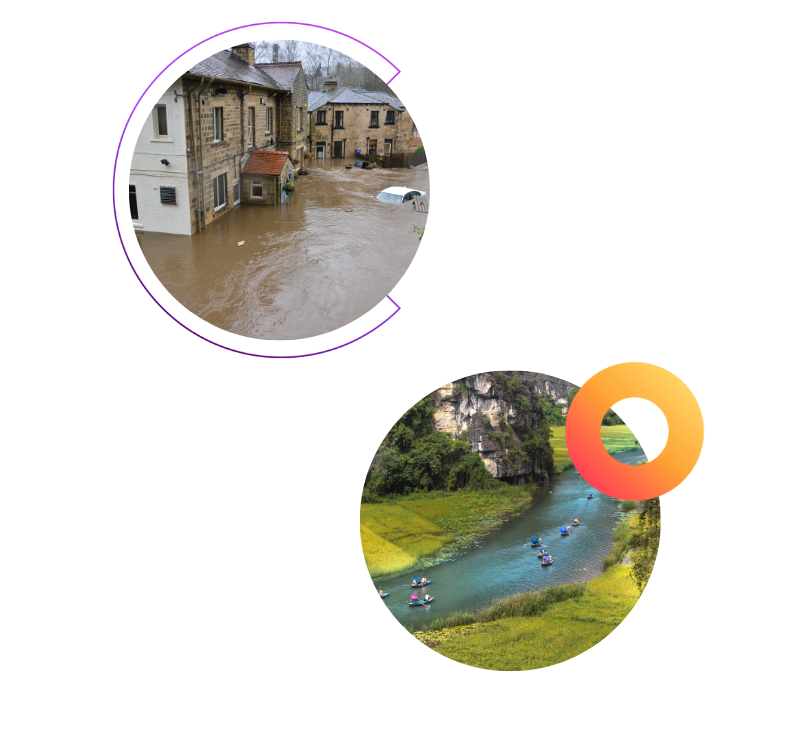Glossary
Glossary


Adaptation
Climate adaptation is necessary to respond to unavoidable climate impacts. It requires implementing effective adaptation measures on the ground as well as supportive governance and financial frameworks.

OVERVIEW:
Progress on adaptation has been far too slow
National policies offer hope, but there is no improvement yet in the resilience of countries, and losses from climate events keep increasing. There is a notable lack of data for a grounded assessment.
The development of adaptation in the EU continued to be far too slow in the period assessed, with no change to the progress classification of the last year. This is primarily due to key indicators towards the objective of becoming a climate resilient society having moved in the wrong direction – economic losses from climate related extremes, for example, have been increasing at an average rate of EUR 6 billion per year – while a notable lack of data surrounding key enablers and other indicators remained.
An updated Adaptation Strategy was launched in 2021 to present a longterm vision for EU adaptation and climate resilience by 2050. This strategy, and the implementation and achievement of its objectives at the EU and Member State (MS) level, should support progress on adaptation within the bloc. Adaptation is further considered at the sectoral level through e.g. Water Framework Directive, Biodiversity Strategy, etc. At the MS level, adaptation governance is operationalised through national adaptation policies. Although these aim to formalise the actions being taken at the national and subnational level, the approaches have a range of content and scopes, and monitoring and reporting efforts remain patchy. The hope is for the EU Adaptation Strategy (EC, 2021f) to enhance the coordination and harmony between national approaches. The EU’s Governance Regulation outlines reporting requirements through National Energy and Climate Plans (NECPs), however requirements related to adaptation remain high-level. This is also true for adaptation finance tracking and reporting. Given that the Adaptation Strategy remains relatively new, and that guidelines on effective national approaches are still in development, more progress on adaptation is expected in the coming years.
To support a climate-resilient society and to achieve the aims of the EU Adaptation Strategy, there is an urgent need for improved data. Basic data on implementation should be enhanced through approaches to track and measure the effectiveness of actions at achieving their resilience objectives. Similarly, information on implementation of certain adaptation plans, and it is important that this continues to be updated; could be enhanced through qualitative evaluation. Improving the data on monitoring, reporting, and evaluation (MRE) in adaptation plans would help in assessing the degree to which plans are being regularly updated. Finally, information on adaptation finance needs significant improvement and streamlining. MS are encouraged (though not required) to develop adaptation budgets. Harmonising the approach to reporting on adaptation actions as well as finance would enable a more comprehensive assessment on the state-of-play of adaptation in the EU.
OBJECTIVES
Objectives describe what needs to be achieved in each building block to reach climate neutrality.
Objective
Becoming a climate resilient society
The average score of EU countries on the University of Notre Dame’s Global Adaptation Initiative (ND-GAIN) index was nearly constant, with a slight downward trend between 2016 and 2021. While there remained a wide range of scores at the country level, to meet the objective of building a resilient society, this indicator needs to be increasing rapidly both at the country and EU level. Meanwhile, economic losses from climate-related extremes were increasing. These losses were the result of a combination of factors: more frequent, intense, and thus costly climatic events because of increasing global warming; more exposed and therefore vulnerable infrastructure and populations; and varying levels of disaster preparedness.
ND-GAIN country index

This indicator shows past development in the average ND-GAIN country index score of EU countries.
The data show an annual decrease of 0.02% between 2016 and 2021. This development was heading in the wrong direction and should be reversed moving forward.
This indicator summarises a country's vulnerability to climate change and other global challenges in combination with its readiness to improve resilience.
Economic losses from climate-related extremes

This indicator shows past development of economic losses from climate-related extremes in Europe.
The data show an annual increase of 21% between 2017 and 2022. This development was heading in the wrong direction and should be reversed moving forward.
The indicator provides a comprehensive picture across the EU of economic losses as a result of climate-related extremes.
ENABLERS
Enablers are the supporting conditions and underlying changes needed to meet the objectives in a given building block. They are the opposite of barriers or inhibitors.
Enabler 1
Implementing adaptation actions
Progress on adaptation actions remained difficult to assess, largely due to a lack of data. The previous report assessed adaptation across the dimensions of greening cities, adapting agriculture and forestry, and blue measures. In this report, we selected one indicator to represent each of these dimensions. With regards to urban adaptation, there remained a strong lack of data. Data for gentle tillage practices in agriculture remained unchanged, with the most recent data coming from 2016, at which point the trend was heading in the wrong direction since 2010. Finally, for blue measures, there continued to be no data on kilometres of rivers restored to a free-flowing state. The EU Biodiversity Strategy set out a target to restore 50,000 km of free-flowing rivers by 2030, however there appears to be no monitoring of progress towards this goal.
Green urban areas

This indicator shows past development in the share of green urban areas in 721 European cities.
There is only one data point available.
The percentage of total green infrastructure, green urban areas and tree cover of 37 capitals as a percentage of their respective surface area (averaged for the EU).
Gentle tillage practices

This indicator shows past development in the share of gentle tillage practices on arable land. Data for gentle tillage practices in agriculture remained unchanged, with the most recent data coming from 2016, at which point the trend was heading in the wrong direction since 2010
Gentle tillage practices includes conservation tillage and zero tillage. It is compared to the overall tillage practices.
River restoration

For now, there is no EU-wide aggregated data on river restoration available.
In order to meet the EU Biodiversity Strategy’s target of 25,000 km of river restoration by 2030, it is suggested that an indicator is developed to track progress towards this goal.
The indicator provides the length of rivers restored to a free-flowing state (without barriers).
Enabler 2
Setting up robust adaptation governance
There was notable progress on adaptation governance in the period assessed, as the topic reached the mainstream. The adoption of the new EU Adaptation Strategy in 2021 was an important development. It is a positive sign that all EU MS have a national adaptation policy document in place. With only one data point, it was harder to identify a trend in the adoption of MRE practices. However, as these form integral parts of national adaptation strategies and plans, it can be assumed that there is a general trend towards increased development of these approaches. In general, we see that monitoring is most commonly in place, followed by reporting and then evaluation.
Adoption of climate framework laws at national level

This indicator tracks the share of EU GHG emissions from Member States that have adopted a climate framework law. The data show an annual increase of 21% between 2018 and 2023. This development, while recent, puts the EU on track to ensuring an operational and comprehensive framework for tackling challenges and making the right decisions on the road to climate neutrality.
This indicator measures the share of EU GHG emissions from Member States that have adopted a dedicated and comprehensive climate framework law at national level. No benchmark is available from an official EU source. ‘Dedicated and comprehensive’ means that a law is specific to climate policy-making and includes a long-term (e.g., 30-year time horizon from year of adoption), quantitative, and economy-wide reduction target as well as short- and/or long-term policy planning for target achievement. Laws are counted starting in the year they are passed by national legislatures. To control for year-to-year variation in emissions, shares are calculated from 2015 data and remain static over the period.
Monitoring, reporting, evaluation in place or being developed

There is currently insufficient data to report on progress.
This indicator measures the share of EU Member States that include a monitoring, reporting, and evaluation (MRE) plan as part of their national adaptation policy.
Enabler 3
Financing adaptation
The situation surrounding adaptation finance is challenging. At the national level, the situation varied significantly. Few countries detailed either required budgets for adaptation or actual spending on adaptation in their national adaptation policies. Even fewer demonstrated comprehensive tracking of planned adaptation expenditure. Furthermore, the methodologies employed, and scope of such budgets differed significantly. Consideration of other aspects of adaptation planning was virtually non-existent with regards to budgeting and finances.
Total investment needs

There is currently no existing data on this indicator.
This indicator tracks adaptation investment needs at the Member State level. These investment needs are in response to current and future climate risks and impacts.
Total planned expenditure

There is currently no existing data on this indicator.
This indicator tracks planned expenditure on adaptation efforts in Member State’s adaptation plans.
Actual spending

There is currently no existing data on this indicator.
This indicator tracks actual spending on adaptation efforts in Member States.









